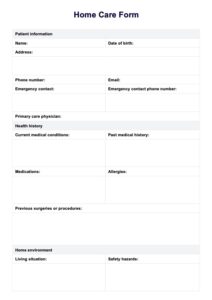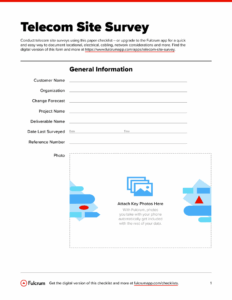Feeling overwhelmed by the idea of putting together the necessary paperwork for your emotional support animal? You’re not alone. Many people find the process a bit daunting, especially when navigating the legal and practical requirements for ensuring your ESA is recognized and accommodated. The good news is, understanding what’s involved and having access to the right resources can make a huge difference. Think of it as gathering the pieces of a puzzle – once you have them all, the picture becomes much clearer.
This article aims to demystify the world of emotional support documentation, offering guidance and insights into creating a document that accurately reflects your needs and complies with relevant guidelines. We’ll explore the essential elements of a strong emotional support documentation template and what to consider when working with your licensed mental health professional (LMHP). Whether you’re just starting your ESA journey or looking to refresh your existing documentation, this guide is here to help you navigate the process with confidence.
Essentially, the key is to remember that documentation isn’t just about ticking boxes. It’s about clearly communicating the therapeutic benefits your emotional support animal provides and ensuring you both can access the support you need. Let’s dive into the details of creating an effective emotional support documentation template.
Understanding the Elements of Effective Emotional Support Animal Documentation
Creating an effective emotional support documentation template involves more than just filling in the blanks. It’s about crafting a document that clearly and concisely articulates your need for an emotional support animal (ESA) and the role your animal plays in mitigating the symptoms of your emotional or mental disability. The most crucial part of obtaining this documentation is getting it from a licensed mental health professional (LMHP). This professional is the only one qualified to assess your needs and write a legitimate ESA letter.
A comprehensive emotional support documentation template should include several key elements. First and foremost, it needs to state that you have a diagnosed emotional or mental disability. It doesn’t need to specify the exact diagnosis, but it should clearly indicate that you meet the criteria for having a condition that substantially limits one or more major life activities. Second, the documentation must explicitly state that your emotional support animal is necessary for your mental health or treatment. This connection between your animal and your well-being is vital.
Furthermore, the documentation should include the LMHP’s information, including their license number, contact information, and the date the letter was issued. This information allows landlords and other entities to verify the legitimacy of the document if needed. Remember, a letter without this professional verification is not considered valid emotional support documentation. The letter should be written on the LMHP’s official letterhead, adding another layer of authenticity.
It’s also important that the letter is current. While there’s no legally defined expiration date for ESA letters, it’s generally recommended that the documentation be updated annually or whenever there’s a significant change in your mental health status or relationship with your ESA. Keeping your documentation current demonstrates a commitment to ongoing treatment and ensures its continued validity.
Finally, be aware of the potential for fraudulent services offering instant ESA certifications or registrations. Legitimate ESA documentation comes from a real, ongoing therapeutic relationship with a qualified LMHP. Avoid any service that promises instant approval without a proper assessment of your mental health needs. Prioritize finding a therapist or psychiatrist who understands the benefits of ESAs and can provide the necessary support and documentation.
Navigating the Practical Aspects of Your ESA Documentation
Once you have your emotional support documentation template from your LMHP, it’s crucial to understand how to use it effectively. This doesn’t mean flashing it around unnecessarily, but rather knowing when and how to present it to ensure your ESA is properly accommodated. Generally, you’ll need to provide your documentation to housing providers to request reasonable accommodation for your ESA, even in pet-free buildings.
When presenting your documentation, it’s a good idea to be prepared to answer questions about your ESA. While housing providers can’t ask for specific details about your disability, they may inquire about the animal’s behavior and whether it’s properly trained. Remember, ESAs are not required to have the same level of training as service animals, but they should be well-behaved and not pose a threat to others.
Be prepared to provide additional information if requested. Some housing providers may ask for a copy of your photo identification and a picture of your ESA. This is a reasonable request that helps them maintain accurate records. If your ESA documentation template is very old, it might be a good idea to see your LMHP to update the document.
It’s also worth noting that ESA laws primarily apply to housing. While some airlines used to accommodate ESAs, this is no longer the case. Most airlines now only recognize trained service animals. If you plan to travel with your ESA, it’s essential to check the airline’s specific policies and be prepared for the possibility that your animal will need to travel in cargo or be considered a pet, subject to standard pet fees and restrictions.
Finally, it’s important to treat your ESA with respect and ensure its well-being. This includes providing proper care, nutrition, and veterinary attention. Being a responsible ESA owner not only benefits your animal but also strengthens your case for accommodation and helps to promote a positive image of ESAs in general. Always be mindful of your ESA’s behavior in public and take steps to prevent any disturbances or issues that could negatively impact others.
Ultimately, having the right emotional support documentation template empowers you to advocate for your needs and ensures your ESA can provide the support you require. By understanding the key elements of effective documentation and navigating the practical aspects of its use, you can confidently navigate the process and enjoy the benefits of having your ESA by your side.
Remember that your mental health is a priority. Work closely with your licensed mental health professional to not only obtain the needed documentation, but also to ensure you are receiving the best possible care. The bond with your emotional support animal can be a powerful tool in your journey toward well-being, and clear, legitimate documentation helps to solidify that connection.



